Introduction
The cost of biofuel production is influenced by a multitude of factors, each playing a significant role in shaping the expenses associated with bringing renewable energy sources to market. From feedstock selection and labor costs to the impact of the oil market and agricultural subsidies, these complex dynamics require careful analysis and strategic planning. Technological advancements in production methods, such as Co-solvent Enhanced Lignocellulosic Fractionation (CELF) and advanced enzymatic hydrolysis, are driving efficiency and cost-effectiveness in the industry.
Government policies and incentives also play a crucial role, with the European Union leading the way in biofuel adoption and growth. However, environmental implications, such as Indirect Land Use Change (ILUC) and greenhouse gas emissions, must be carefully managed to ensure the sustainable development of the biofuel industry. As the industry evolves, optimizing costs, integrating biofuel production into established sectors, and considering the broader economic and environmental impacts will be key to its success.
With a comprehensive understanding of these factors, biofuel producers can navigate the challenges and seize the opportunities that lie ahead in the evolving energy landscape.
Factors Influencing the Cost of Biofuel Production
The expenses associated with bringing these renewable energy sources to the public are influenced by a intricate interplay of various factors, with each factor contributing to the final outlay. Feedstock, the raw material used to produce biofuels, is a major driver of expenses. For instance, in the worldwide ethanol market, which is expected to achieve a volume of around 110 billion liters in 2020, the main feedstocks are corn and sugar. The selection of feedstock affects not only the expenses but also the sustainability and efficiency of production.
Alongside feedstock expenses, labor and land costs are pivotal. In regions like Europeâwhere the industry for renewable fuels is bolstered by economies such as France, the UK, Germany, and Polandâgovernment policies and initiatives have been instrumental in the advancement of alternative fuels like ethanol, biodiesel, and renewable diesel. Europe is anticipated to become the fastest-growing alternative fuel sector due to the proactive approach of the European Union during the projected timeframe.
Moreover, the influence of the oil market and agricultural subsidies cannot be discounted. They have the ability to either stabilize or destabilize the expenses associated with biofuel manufacturing. Technological advancements in manufacturing techniques aim to enhance efficiency and decrease expenses, further influenced by dynamic government policies and incentives. Notably, the U.S. has seen significant growth in its ethanol market share, increasing from less than 20% to over 40% in the past decade, thanks in part to government incentives.
A thorough grasp of these elements is crucial for individuals engaged in the creation, trading, or formulation of policies related to alternative energy sources, as it allows for the discovery of opportunities for expense reduction and tactical decision-making to navigate the changing energy environment.
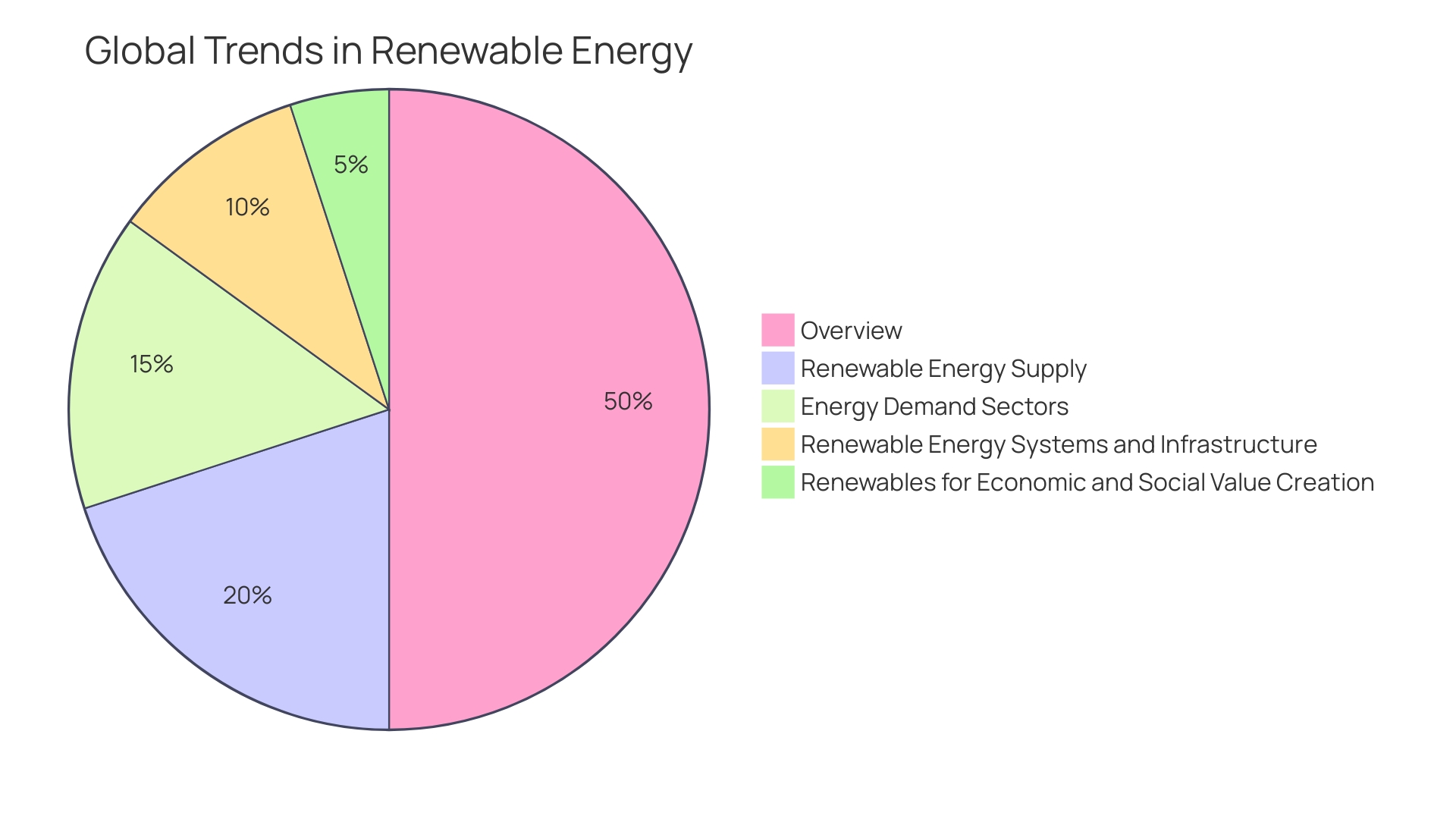
Feedstock Costs and Variations
The financial aspects of producing alternative fuel are greatly impacted by the expense of raw materials, which encompass substances such as corn, sugarcane, soybeans, and non-edible vegetation biomass. The price and availability of these resources dictate the financial viability of biofuels. While early renewable fuel efforts primarily utilized food crops, leading to concerns over land and water use, the field has evolved. Modern methods, like those using Co-solvent Enhanced Lignocellulosic Fractionation (CELF), now prioritize non-food biomass such as poplar trees, reducing competition with food manufacturing. However, feedstock expenses continue to be influenced by changes in weather, demand, and logistics, which may pose challenges in sustaining a consistent and lucrative production process for alternative fuels.
The European market for renewable fuels, characterized by a strong presence of ethanol, biodiesel, and renewable diesel, is witnessing a surge partly due to supportive policies by the European Union. This area, encompassing major economies such as France, Germany, and the UK, is expected to witness a fast-paced increase in the adoption of alternative fuel sources. The European Union's dedication to promoting the use of renewable energy sources is evident in the progressive initiatives and policies aimed at fostering sustainable energy sources.
Furthermore, with a compounded annual growth rate (CAGR) of 12.07% projected through 2031, the global stationary fuel cell market, which includes applications for biofuels, is expected to reach a valuation of $13.41 billion. This growth reflects an increasing demand for renewable energy solutions. Additionally, ethanol has been recognized for over two decades for its role in enhancing climate conditions, energy independence, and air quality, as well as providing economic benefits to rural areas and the agricultural sector.
In conclusion, as the alternative fuel industry advances, the emphasis on evidence-based policymaking and technological innovation continues to redefine the role of alternative fuels as a sustainable option in a decarbonizing world.
Labor and Land Costs
Exploring the economics of fuel derived from organic matter, labor and land are important factors to take into account. Labor encompasses not only wages but also benefits and the expense of training personnel, all of which add to the total operational costs. The land is an equally critical factor, with the price and availability of suitable plots impacting the profitability of alternative fuel sources. Potential fuel producers must consider the financial consequences of land acquisition, leasing, and ongoing maintenance.
In the context of ethanol, a primary alternative fuel, we observe that it has emerged as a rapidly growing industry, enhancing the agricultural sector's value with a 33% growth over the past decade. By 2020, global ethanol production was projected to reach 110 billion liters, with the United States significantly increasing its market presence from under 20% to over 40% in the same period. This expansion reflects the strategic importance of feedstock selection, with corn and sugar being predominant.
The European industry demonstrates a strong dedication to the integration of sustainable fuels, driven by ethanol, biodiesel, and renewable diesel. The region's economy is driven by established economies such as France, the UK, Germany, and Poland, which have advanced through various policies and initiatives. This proactive approach positions Europe as a potential leader in the growth of the market for alternative fuels during the forthcoming period.
The production process of biofuels is akin to that of crude oil refining, offering a seamless integration with conventional fuels. As the world grapples with climate change and the urgency to transition to renewable energy sources, biofuels stand as a critical alternative, with the potential to be employed as transportation fuels in the future, reducing reliance on fossil fuels.
However, the environmental implications of fuel derived from organic matter demand, notably Indirect Land Use Change (ILUC), cannot be overlooked. Past European policy missteps in expanding biodiesel use without considering emissions from land clearing have led to detrimental effects, such as the deforestation of tropical rainforests. Therefore, the carbon footprint of land conversion for renewable fuel cultivation is a crucial concern that must be tackled to guarantee the sustainable development of the alternative fuel sector.
Impact of Agricultural Subsidies and Oil Market
In the context of producing alternative fuel, the interaction between financial support for agriculture and influences from the petroleum industry plays a crucial part in shaping expense frameworks. Financial support to the agricultural industry has a direct impact on the expense and accessibility of feedstock for biofuels, especially in Europe, where the production of ethanol, biodiesel, and renewable diesel is flourishing. The European Union's pro-biofuel policies catalyze this industry, as evidenced by the fast-paced growth forecasted for the region, including key economies like France, UK, Germany, and Poland.
A significant portion of bio-based diesel, including biodiesel and renewable diesel, is derived from vegetable oils. In reality, over 80% of these fuels are generated from vegetable oil sources, highlighting the impact of agricultural feedstock prices on the biofuel industry. This reliance invites scrutiny of the costs associated with biodiesel production—where oil pricing volatility can either enhance or diminish biofuels' competitivity as a renewable energy source.
Moreover, dynamics such as government interventions, including the $45 billion in tax credits extended to U.S. ethanol producers from 1980 to 2011, have profound implications. Such subsidies can distort crop pricing, as seen with corn—a staple in both food and fuel industries—where increased demand for ethanol can result in higher corn prices for food.
Concurrently, the ethanol market's growth, with a 33% increase over the past decade and the U.S. capturing over 40% of the global market share, reflects the significant scale and energy of this sector. This growth is set against a backdrop of rising concern for climate change and the associated shift towards renewable fuels.
It is crucial to mention that the growth of alternative fuel manufacturing can trigger Indirect Land Use Change (ILUC), resulting in deforestation and subsequent carbon emissions. The warning story of biodiesel's increase in the 2000s, which resulted in the destruction of over 6 million hectares of rainforest in Indonesia and Malaysia, serves as a clear reminder of the environmental trade-offs inherent in the policies of producing alternative fuels.
Ultimately, a thorough examination of these external factors - including government subsidies and oil market trends to environmental considerations - is essential for comprehending the implications of cost dynamics in renewable fuel.
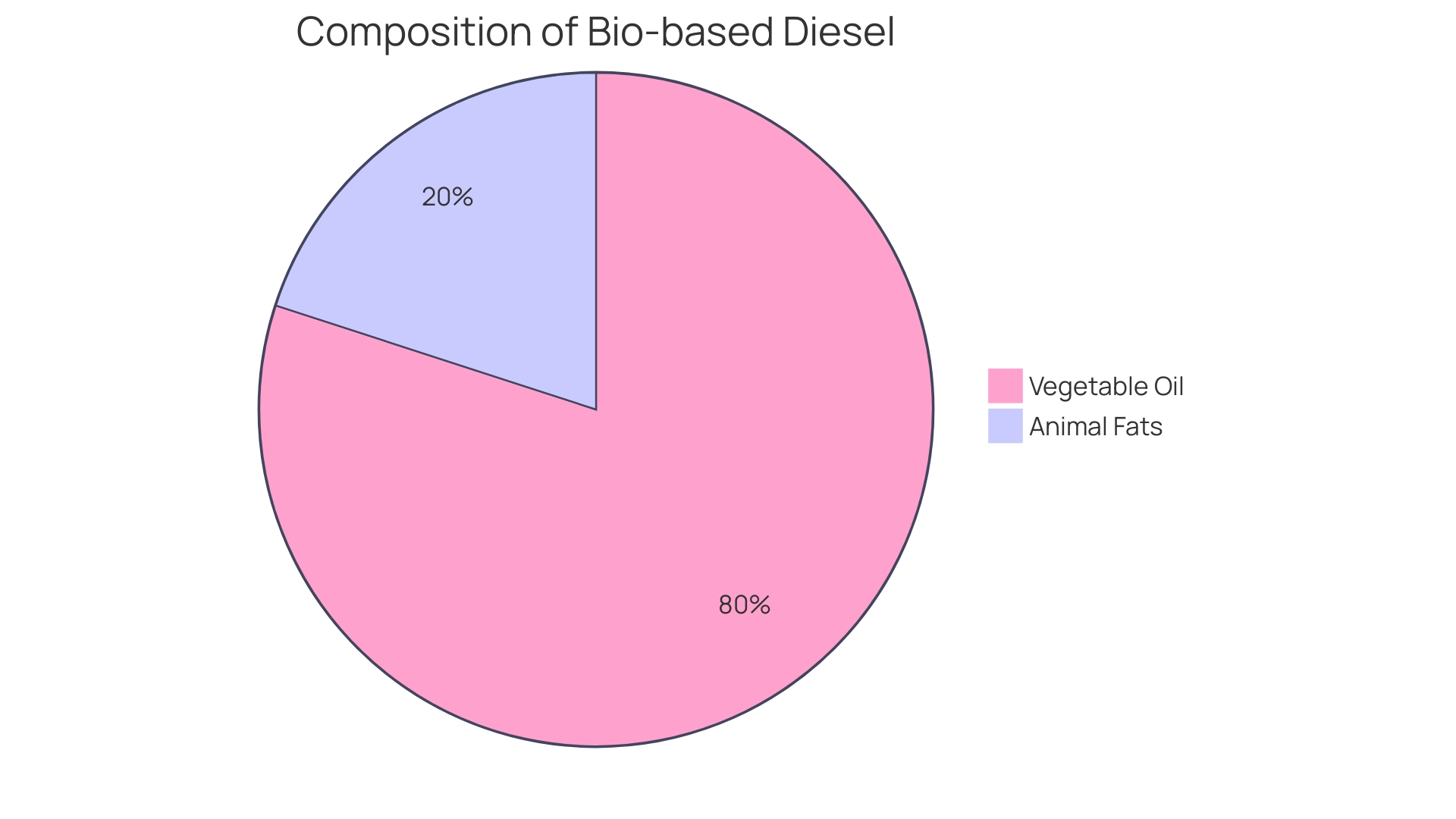
Advanced Production Methods and Efficiency
The advancement of technologies for producing sustainable energy is ready to transform the sector by improving both the effectiveness and the cost-efficiency of renewable energy sources. Groundbreaking strides in enzymatic hydrolysis and genetic engineering are leading to higher yields and superior quality of biofuels. For example, the groundbreaking discovery from the University of Wroclaw, spearheaded by Professor Andrzej Vogt, demonstrates the crucial function advanced technology serves in enhancing renewable fuel manufacturing. This internationally patented technology from BIOTERRAN not only integrates seamlessly into existing energy infrastructures but also complements other renewable sources like solar and wind by providing a reliable energy backup.
In line with the cutting-edge work at the University of Wroclaw, the National Renewable Energy Laboratory (NREL) has been instrumental in developing Co-solvent Enhanced Lignocellulosic Fractionation (CELF) biorefineries. These facilities are designed to fractionate biomass upfront, enabling the simultaneous generation of multiple products from each major biomass component, thus paving the way for a more diversified and sustainable bioenergy sector. The push towards non-edible plant biomass as feedstocks, as opposed to food crops, is a testament to the industry's commitment to sustainability and addressing the concerns of Indirect Land Use Change (ILUC).
The recent progress in e-fuels, as part of the Power-to-X technologies led by companies like Neste, are a testament to the innovative spirit propelling the biofuel industry forward. The development of sustainable electric aviation fuels is particularly noteworthy, as it offers an alternative to fossil fuels in sectors where battery technology is currently inadequate.
The worldwide ethanol industry, a vital component of bioenergy, has experienced significant expansion over the last ten years, with output estimated to reach approximately 110 billion liters in 2020. This growth signifies a 33% increase over the last ten years, with the US expanding its global market share significantly. These statistics highlight the burgeoning potential of bioenergy as a viable and lucrative alternative to traditional energy sources, providing a beacon of hope for a more sustainable and energy-secure future.
Comparison of Biofuel Types: Ethanol and Biodiesel
A comprehensive analysis of different biofuel types, such as ethanol and biodiesel, is required due to the intricate nature of their economic aspects. Each type is characterized by its distinctive methodology of manufacturing, feedstock prerequisites, and inherent cost frameworks. In the context of ethanol, its substantiated role as a sustainable alternative to oil is supported by over two decades of practical evidence. Technological advancements have enhanced its climate, rural development, farming, energy independence, and air quality benefits. The European market, a major proponent of biofuels, is witnessing a surge in growth driven by ethanol, biodiesel, and renewable diesel. These developments underscore the importance of reassessing ethanol's potential in the evolving landscape of climate change mitigation and transportation. In contrast, the manufacture of biodiesel has shifted towards non-edible plant biomass to alleviate the ethical concerns of using food crops. Innovations like the Co-solvent Enhanced Lignocellulosic Fractionation (CELF) process enable the fractionation of lignocellulosic biomass, allowing the simultaneous generation of diverse products. Poplar trees, for instance, have emerged as an ideal feedstock for such advanced biorefineries. This advancement in manufacturing methods and resource usage, coupled with encouraging strategies from organizations such as the European Union, offers crucial information for fuel producers to ascertain the most financially feasible paths of manufacturing.
Environmental Implications and GHG Emissions
The discussion surrounding the generation of alternative fuels frequently emphasizes its capability as an environmentally friendly power source, however, a comprehensive analysis uncovers a multifaceted depiction. The environmental impacts of alternative fuel manufacturing are complex, with concerns like alterations in land use and forest depletion in the spotlight. The Midwest, a significant agricultural hub, demonstrates this complexity. Agricultural activities in this region, which are heavily skewed towards biofuel crops like corn and soybeans, account for about 20% of its emissions, a stark contrast to the national average of 10%. The manufacturing and use of fertilizers, management of animal waste, and energy consumption on farms contribute to the emission of 315 million tons of CO2 equivalent, while land sequestration offsets only a fraction of this amount.
The manufacturing of biodiesel and renewable diesel, primarily from vegetable oils, encompasses more than 80% of the bio-based diesel market. While using cooking oils and byproducts like corn oil from ethanol manufacturing seems a viable option, the expansion of these crops can lead to indirect land use change (ILUC), a significant contributor to greenhouse gas emissions. In Europe, a push for biodiesel led to the deforestation of millions of hectares of rainforest to cultivate palm oil, highlighting the dangers of overlooking ILUC.
Moreover, the biofuels industry, with its expansions and new facilities, is not immune to regulatory challenges. Violations related to emissions and the requirement for more stringent supervision by organizations such as the EPA highlight the importance of adopting a well-rounded strategy towards the manufacturing of alternative fuels, taking into account both its environmental drawbacks and advantages. As the industry expands, driven by policies and incentives, a transition towards a low-carbon economy necessitates the incorporation of biomass in different forms, from biochar to biofuels, each with its own expense and effect on emissions. The transition to sustainable energy sources is critical to meet climate targets, and biofuels play a pivotal role in this shift, but only when their full lifecycle and environmental implications are carefully managed.
Cost Optimization Strategies
Maximizing the economic efficiency of biofuel manufacturing is crucial for guaranteeing the feasibility and long-term endurance of this sustainable energy resource. One approach for expense reduction is the utilization of Co-solvent Enhanced Lignocellulosic Fractionation (CELF) biorefineries, which process lignocellulosic biomass more efficiently. This technology enables the fractionation of biomass upfront, leading to the simultaneous production of various high-value products from different biomass components. Transitioning from first-generation feedstocks like corn and sugarcane to non-edible plant biomass can also alleviate competition with food resources and promote sustainability. Furthermore, the strategic choice of optimal biomass, like poplar trees, combined with progress in lignin extraction, can further reduce expenses. As nations aim to establish commercial-scale biorefineries to meet ambitious renewable fuel targets, such as the United States' goal of 3 billion gallons of sustainable aviation fuel by 2030, these technological improvements are more important than ever. In parallel, leveraging legislative incentives for low-carbon emission technologies and the ongoing decrease in costs for renewables like wind and solar power can support the economic competitiveness of biofuels. The continued research and development, as evidenced by collaborations like the one between Cai's team at UCR and Oak Ridge National Laboratories, underscore the potential for biofuels to play a significant role in decarbonizing sectors that are challenging to electrify, such as aviation.
Scale, Integration, and Supply Chain Configurations
Scalability of biofuel, along with its integration into established sectors and the optimization of supply chains, is crucial for cost-effectiveness. As evidenced by Bosch's creation of the solid oxide fuel cell (SOFC) system, which converts energy at a local level suitable for green megawatt-range power plants, scalability and digital monitoring via a digital twin can significantly enhance energy efficiency and operational savings. The SOFC system's high electrical efficiency of 60% demonstrates how large-scale manufacturing can leverage economies of scale to reduce expenses per unit.
The integration of biofuel production with agriculture or waste management industries presents further cost-saving opportunities, as seen in the development of Sustainable Aviation Fuels (SAFs) analyzed by students at Waubonsee. This integration can lead to a more circular economy and sustainable energy practices. Moreover, by improving the logistics of biofuels, as evident in the substantial growth projections of the European industry, it is possible to reduce extra expenses. The European region's active promotion of biofuels through policies has resulted in a diverse market that includes ethanol, biodiesel, and renewable diesel.
The changing alternative fuel landscape, indicated by the 4.3 exajoules (EJ) demand in 2022, highlights the importance of continuous innovation and the adoption of more sustainable practices, such as utilizing waste, residues, and non-food crops for fuel production. This shift is not only environmentally sound but also aligns with the International Energy Agency (IEA)'s projections and the industry's commitment to decarbonization.
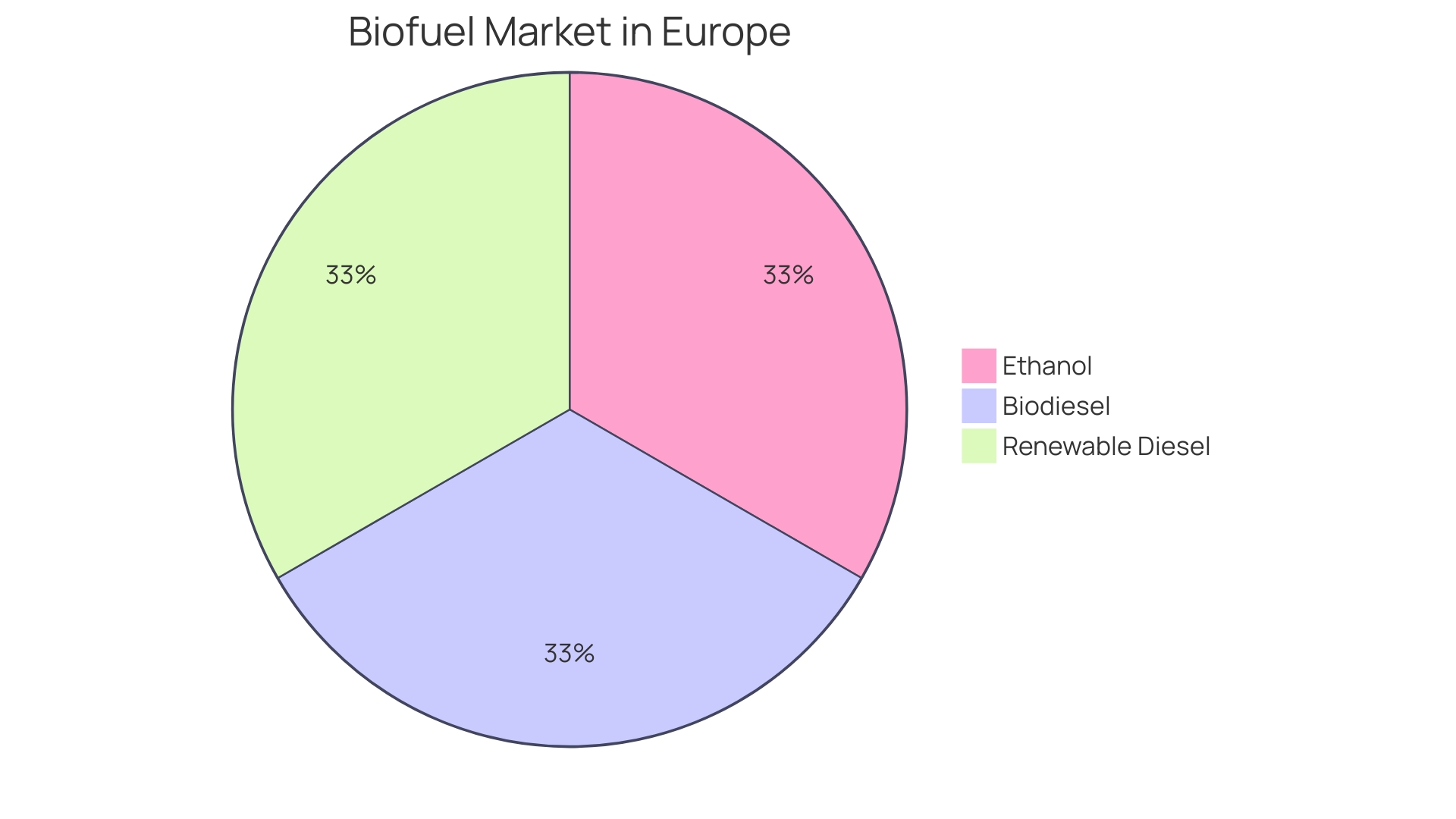
Economic Benefits and Potential Savings
The industry's impact extends far beyond its role as an energy source; it contributes significantly to economic vitality, employment, and energy security. The industry's expansion is accelerated by technological advancements and government backing, especially in Europe, where countries such as France, the UK, Germany, and Poland are quickly developing their alternative fuel sectors. The European Unionâs proactive initiatives have resulted in a surge in the utilization of ethanol, biodiesel, and renewable diesel, with the region ready to emerge as the fastest-growing renewable fuel industry.
Advancements in biofuel manufacturing processes have also played a crucial role in economic development. For example, the ethanol industry, utilizing corn and sugar as primary raw materials, has experienced an impressive 33% expansion over the previous ten years, with worldwide production estimated to reach around 110 billion liters by 2020. This expansion has not only fortified the agricultural sector by diversifying income streams for farmers but has also cemented the United States’ position as a dominant player, with its market share escalating from less than 20% to over 40% in the same period.
Moreover, educational initiatives are helping to elucidate the multifaceted benefits of biofuels. In a case study conducted by Waubonsee Community College, students analyzed Sustainable Aviation Fuels (SAFs) using Argonne's comprehensive Greenhouse Gases, Regulated Emissions, and Energy Use in Technologies model. The case study highlighted the intricate life-cycle impacts of SAFs, providing students from diverse academic backgrounds with valuable insights into the energy-environment nexus.
Biofuels also offer considerable potential to stabilize fuel prices and mitigate the economic shocks from oil price volatility. This assertion aligns with the growing affordability and competitiveness of renewable energy sources like solar and wind power across the United States. As energy costs decrease, the burden on households eases, eliminating the need to choose between essential expenses such as utilities and healthcare. Additionally, biofuels contribute to energy equity, which is fundamental for safeguarding the health and safety of all citizens, particularly in underserved communities.
The evidence for biofuels as a sustainable and cost-effective alternative to conventional fuels is compelling. With over two decades of real-world application, ethanol has proven its efficacy and is being reevaluated for its ongoing potential in the face of evolving climate and transport priorities. The Climate Ethanol Alliance, among others, champions this cause, advocating for evidence-based policymaking to ensure the continued advancement of renewable fuels for a more resilient and equitable energy future.
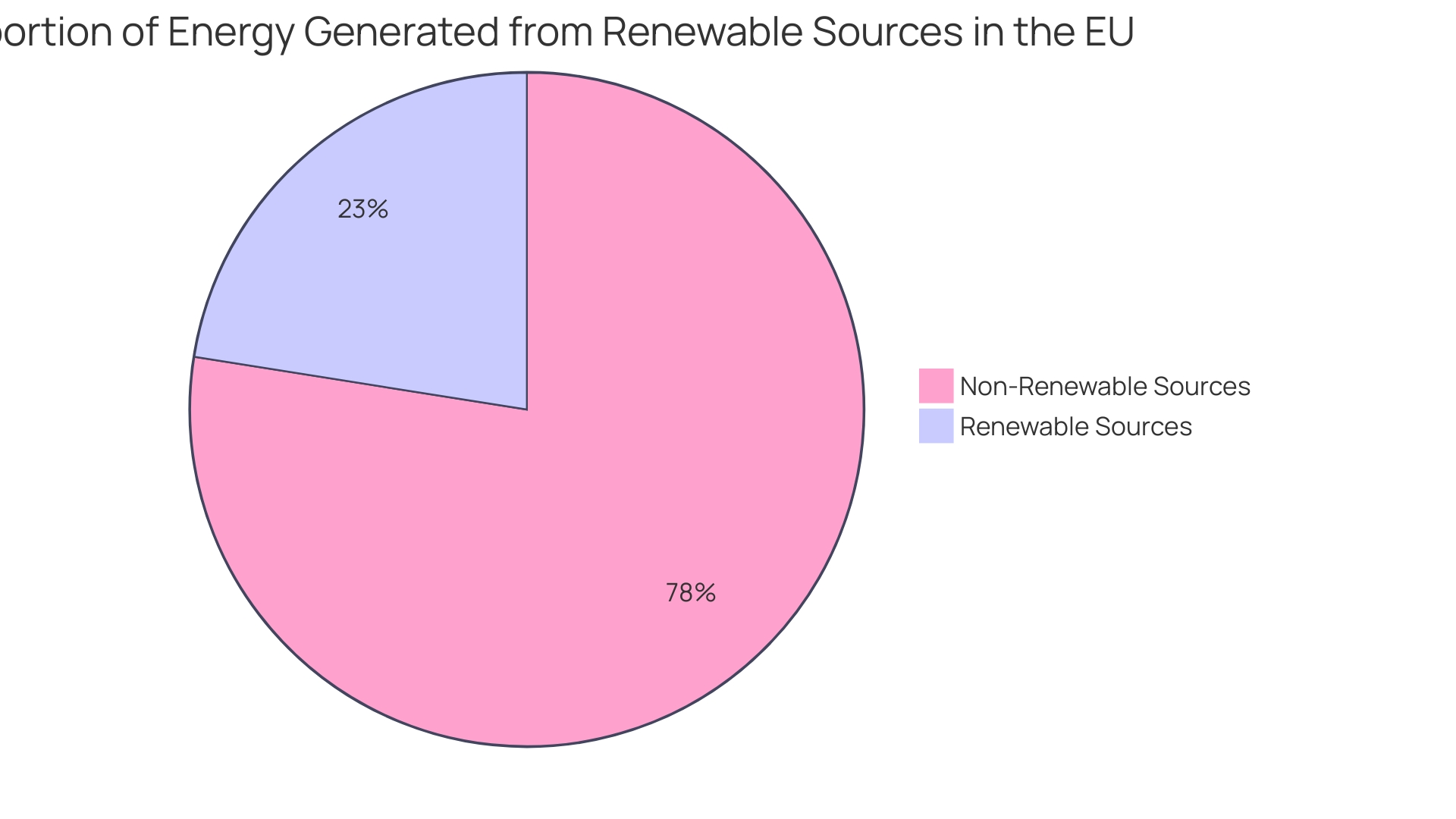
Economic Disbenefits and Impacts on Food Prices
The intersection of biofuel manufacturing and food pricing is a multifaceted issue with significant ramifications for both industries. The manufacturing of bio-based diesel, which includes biodiesel and renewable diesel, depends greatly on vegetable oil as a main raw materialâmore than 80% is derived from it, with the rest mostly obtained from animal fats. Significantly, the oils utilized, such as soybean and canola, are similar to those found on supermarket shelves, while corn oil is mostly a byproduct from ethanol manufacturing, usually designated for animal feed or other purposes. With bio-based diesel fulfilling the Federal Renewable Fuel Standard's requirements, there is inherent competition for these oils and fats, potentially influencing market dynamics for both fuel and food sectors.
In the midst of this situation, various factors influence global food prices, including dependence on oil for agricultural activities, transportation, and the effect of oil price fluctuations on food costs. Intensive farming methods and the excessive use of agrochemicals require greater utilization of fertilizers, further increasing expenses. This interplay between energy and food creation is captured within the water-energy-food (WEF) nexus, highlighting their mutual dependencies and the vulnerabilities that arise as demand grows.
The pricing of agricultural commodities is largely determined by supply and demand, with costs of manufacturing setting the baseline for market prices. A rise in food prices has been particularly notable in recent years, attributed to three primary factors: the ongoing repercussions of the COVID-19 pandemic, geopolitical tensions such as the war in Ukraine, and the escalating climate crisis. These elements have caused disruptions along the food supply chain, exerting upward pressure on prices. Therefore, comprehending the economic effects of producing alternative fuel is crucial, especially in terms of its potential to raise food costs by vying for limited resources.
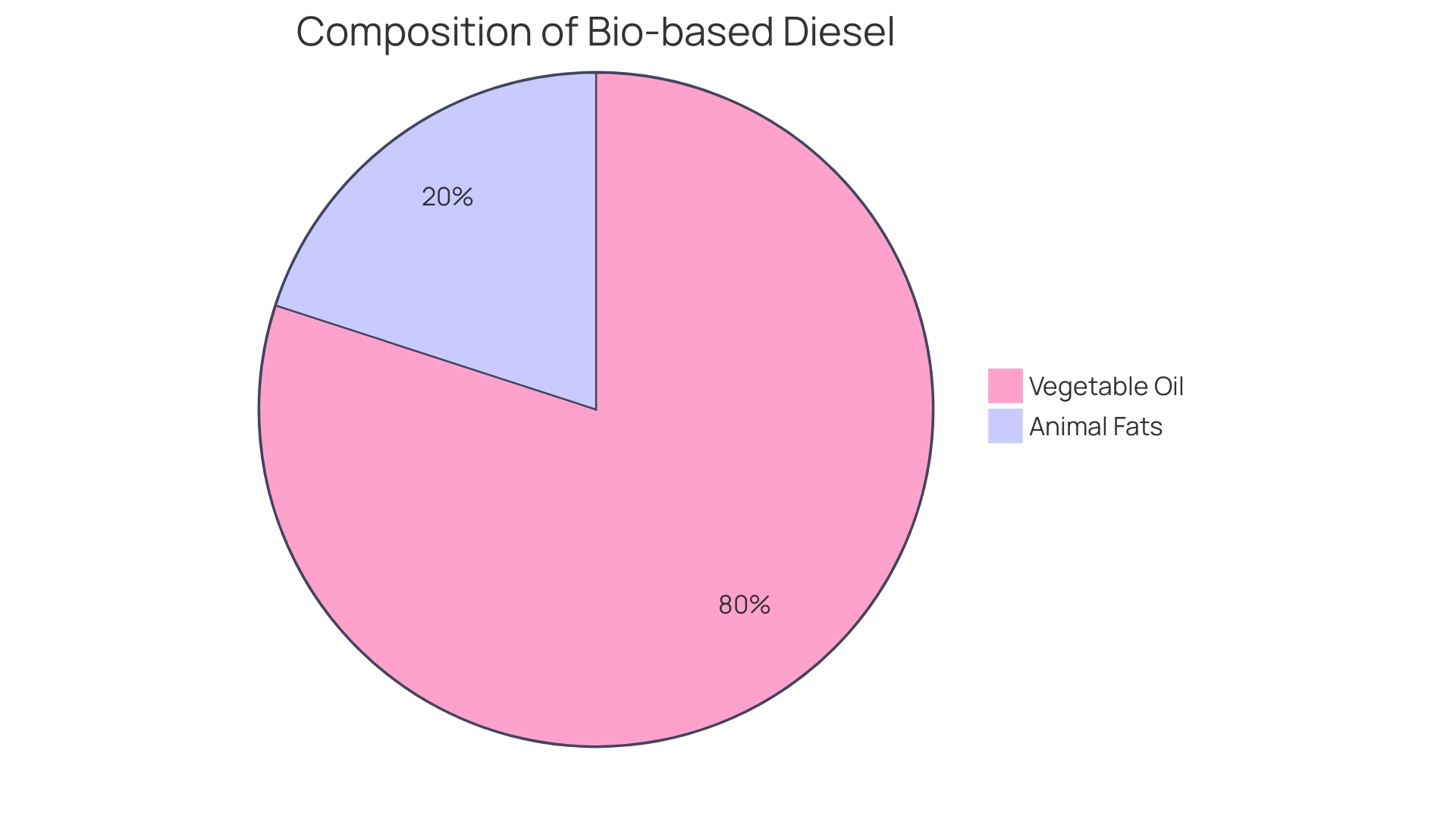
Government Policies and Incentives for Biofuel Production
The renewable energy sector is closely connected with government policies and incentives that can have a substantial impact on the economics of manufacturing. For example, government assistance such as tax incentives and regulations for sustainable energy can enhance the economic feasibility of producing alternative fuel by compensating for certain expenses linked to manufacturing and conversion procedures. In Europe, the rapid expansion of the alternative fuel market is evidence of such policies. The European Union, consisting of major economies such as France, Germany, and the UK, has been proactive in promoting biofuels like ethanol, biodiesel, and renewable diesel through various measures, aiding in the reduction of manufacturing expenses and supporting industry growth.
Additionally, the indirect effects of alternative fuel manufacturing on modifications in land use, particularly in the Midwest of the United States, underscore the intricate connection between agricultural practices, greenhouse gas emissions, and alternative fuels. The EPA's National Greenhouse Gas Inventory indicates that agricultural emissions in the Midwest made a significant contribution to the region's greenhouse gas footprint due to the cultivation of crops for the purpose of producing biofuels, particularly corn and soybeans, which are commonly used in biofuel manufacturing. This highlights the need for careful policy design that takes into account the broader environmental impacts, including Indirect Land Use Change (ILUC), which has sparked considerable debate over the past two decades. Lessons from past experiences, such as the increase in biodiesel use in Europe during the 2000s leading to deforestation for palm oil plantations, illustrate the critical importance of considering ILUC in policy decisions.
In conclusion, a thorough analysis of the interplay between government policies, incentives, and the consequential environmental effects is crucial. This comprehensive comprehension can lead to optimizing the costs of biofuel manufacturing while ensuring sustainable practices and mitigating negative environmental impacts.
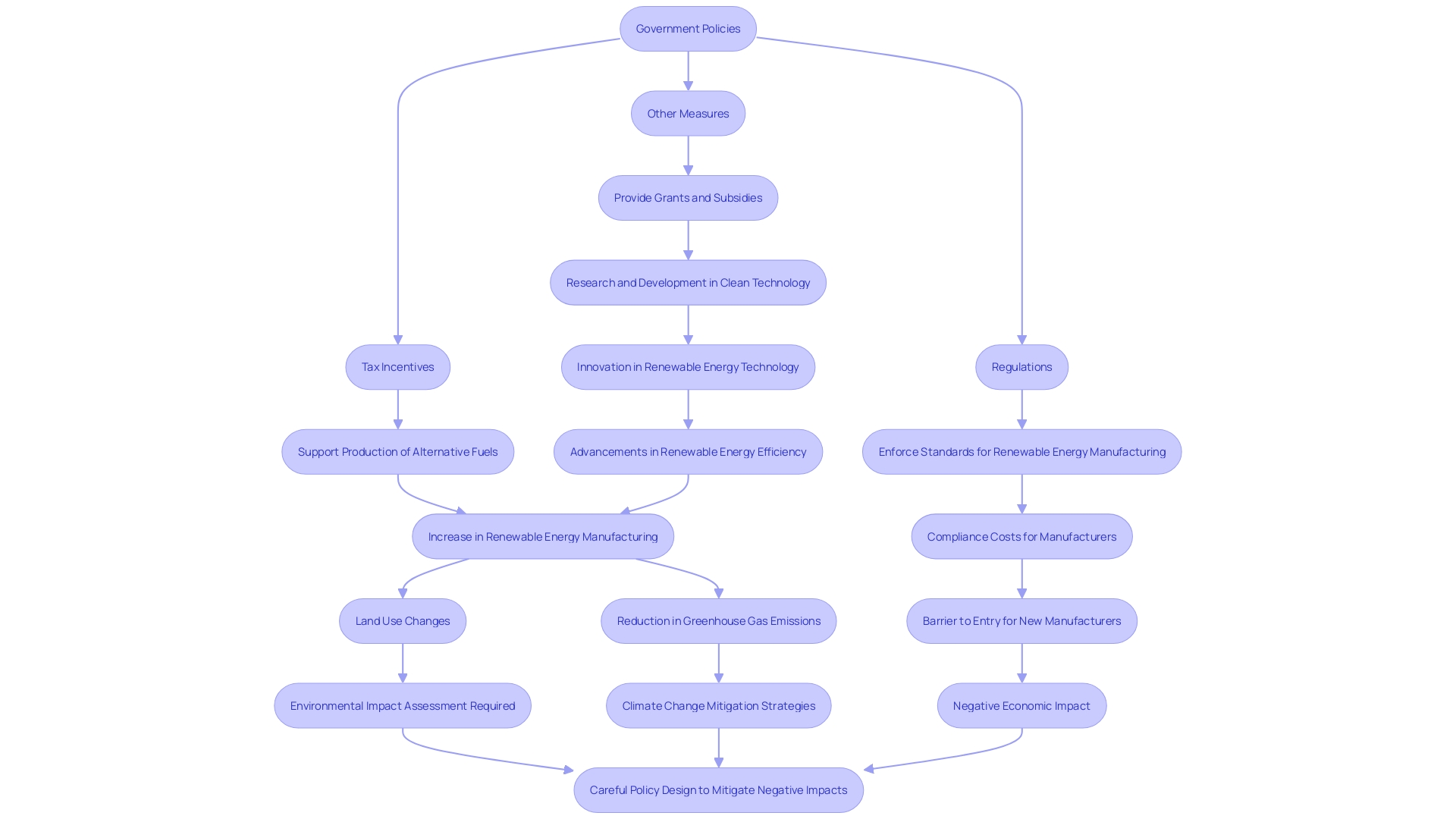
Challenges and Future Outlook
The manufacturing of biofuels is a intricate process influenced by multiple factors, including the availability of feedstock, the evolution of technology, and the regulatory landscape. Feedstock supply is crucial, as emphasized by GlobalData's Oil and Gas Analyst Ravindra Puranik, who emphasizes the need to transition towards advanced feedstock to address food security concerns and promote sustainable fuel development. Technological advancement is equally critical. Utilizing innovative methods such as the 'Power to X' technology, which transforms electricity into valuable energy-carrying molecules, researchers like Claudia Gomez are working towards the production of biofuels, assessing their mechanical performance and emissions in various engines.
The importance of regulatory stability and investment-friendly policies is underscored by Karen Peralta of the Andi-Naturgas Hydrogen Chamber, emphasizing that long-term investment is essential for renewable technologies to thrive. Market trends also indicate a substantial growth, with the stationary fuel cell sector projected to expand at a CAGR of 12.07% by 2031, as per Transparency Market Research.
Europe is leading the way in this expansion, expected to be the fastest-growing area in the renewable fuel market. The European Union's dedication to alternative fuel sources is apparent through the active promotion of ethanol, biodiesel, and renewable diesel, with the support of favorable policies and initiatives. This forward-thinking strategy in major economies such as France, UK, Germany, and Poland not only tackles the challenges of renewable fuel generation but also lays the groundwork for a future where biofuels have a crucial role in energy consumption.
By acknowledging these multifaceted challenges and leveraging the opportunities present within the European market and beyond, biofuel producers can chart a path towards not only cost-effective but also sustainable biofuel production.
Conclusion
In conclusion, the cost of biofuel production is influenced by factors such as feedstock selection, labor and land costs, the oil market, and agricultural subsidies. Technological advancements like CELF and advanced enzymatic hydrolysis drive efficiency and cost-effectiveness. Government policies and incentives, especially in the European Union, play a crucial role in promoting biofuel adoption.
Managing environmental implications, such as ILUC and greenhouse gas emissions, is essential for sustainable development. Non-food biomass like poplar trees can mitigate competition with food production. Balancing economic benefits with potential disbenefits, like increased food prices, is crucial.
CELF and genetic engineering revolutionize the industry by enhancing efficiency and reducing costs. Integrating biofuel production into established sectors like agriculture and waste management offers cost-saving opportunities. Optimizing supply chains and leveraging economies of scale are key.
Government policies and incentives shape biofuel economics. Tax credits, renewable fuel standards, and supportive measures offset costs and support industry expansion. Environmental impacts like ILUC and emissions must be considered.
The biofuel industry faces challenges and opportunities. Shifting to advanced feedstock, investing in technology, ensuring regulatory stability, and capitalizing on market growth are crucial. With a comprehensive understanding, biofuel producers can navigate challenges and seize opportunities in the evolving energy landscape.




